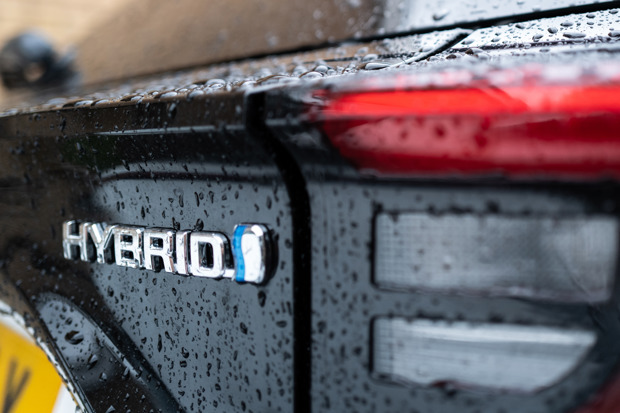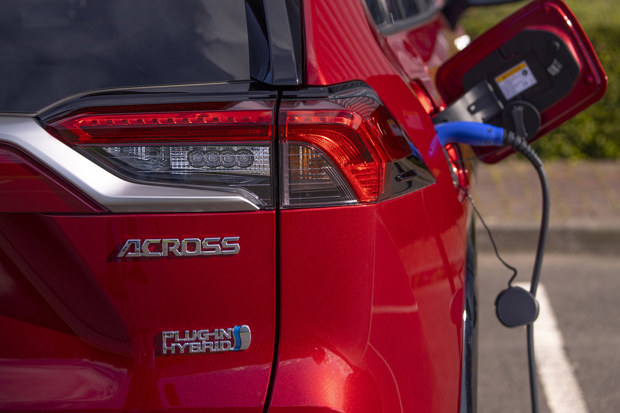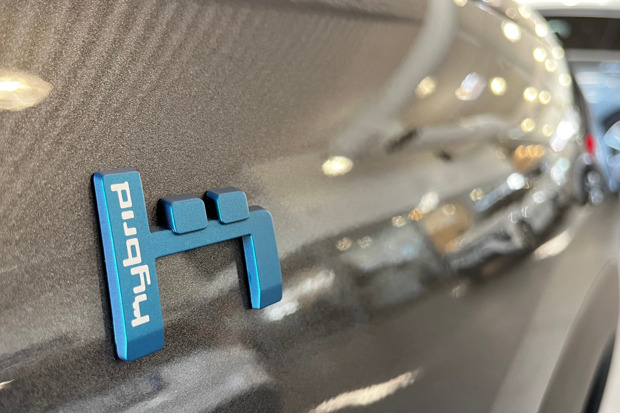What is a hybrid car? Everything you need to know
Confused about hybrid cars? We explain the different hybrid car types and and how they work.

- Hybrid cars explained
- What is plug-in hybrid car?
- What is a self charging hybrid?
- What is a mild hybrid car?
What is a hybrid car? It's a question we get asked time and again. And with self-charging hybrids, mild hybrids and plug-in hybrids now all prevalent on the car market, it's no surprise that car buyers are finding it somewhat baffling.
Which is why we've put together this guide to explain the different types of hybrid car and how they work. Hybrid cars now account for 40% of all new car sales with and they are increasingly rapidly as manufacturers switch away from diesel and start to introduced more hybrid models.
So if you want to know what the different kind of hybrids are, how they work and whether a hybrid is right for you, read our complete guide.
What is a hybrid car?
A hybrid car - also called a self charging hybrid or hybrid electric vehicle - combines a petrol or diesel engine with an electric motor. Although these can sometimes travel under electric power at limited speeds for short distances, the electric motor usually works at the same time as the petrol or diesel engine.
The advantage of this is increased efficiency in terms of fuel economy and CO2 emissions compared to a conventional petrol or diesel car without an electric motor.
Unlike an electric vehicle, you don't need to charge a hybrid car and they're capable of travelling long distances without a break, meaning many car buyers see hybrids as a good middle ground between combustion-engined cars and electric vehicles.
Example of self-charging hybrid cars include the Toyota Corolla, the latest Honda Civic and the Hyundai Kona Hybrid.
What is a mild hybrid car?
You've probably seen more mild hybrid cars around as most manufacturers are adopting the technology. A mild-hybrid car - also known as an MHEV - uses a small generator along with a lithium-ion battery in place of the normal starter motor and alternator.
This battery powers things that would normally be powered by the engine, increasing efficiency. Most mild hybrid cars run on 48 volts rather then the usual 12v of a standard petrol or diesel. Hence why you will often see '48v' next to MHEV when looking for new and used cars.
There is plenty of confusion about the difference between self-charging hybrid and mild hybrid cars, not helped by the car manufacturers themselves. For instance, you can buy a Suzuki Swift Hybrid which even has a hybrid badge on the boot, yet is actually a mild-hybrid rather than a full hybrid car.
Examples of mild hybrid cars include the Fiat 500 Hybrid, the Ford Puma mHEV and the Volkswagen Golf eTSI.
You don't plug in a mild-hybrid car, it simply operates like a normal petrol or diesel car so from behind the wheel you shouldn't notice any difference, apart from hopefully better fuel economy and in some models, better performance.
Mild hybrid cars cannot run on electric power alone though, the motor only provides a small amount of electrical assistance to the engine.
What is a plug-in hybrid car?
A plug-in hybrid car - also called a PHEV - combines an electric motor with a petrol or diesel engine. It differs from a self charging hybrid in that it can be charged by being plugged in, like an electric car.
While hybrids rely on their petrol or diesel engine alongside the electric motor, plug-in hybrid cars can travel further under electric power alone - usually capable of covering 20 to 40 miles before the engine kicks in. Newer plug-in hybrids, like the latest Mercedes C 300 e can cover 60+ miles.
This means you'll save money on fuel especially if you're doing lots of short journeys and can plug in at home in between.
If you do need to travel further afield, plug-in hybrid cars can cover long distances without a charge. This means they're ideal if most of your journeys are short (e.g. commuting) but occasionally you need to travel further.
However, once the battery runs out you are relying on the petrol (or diesel) engine to provide power for the car. And while doing so you have the extra weight of an electric motor and batteries. This is why so many plug-in hybrids aren't especially good on fuel economy once the battery is depleted.
Plug-in hybrid vehicles usually have a bigger battery than a conventional or 'self-charging' hybrid which can also mean less boot space, although on newer models this is becoming less of an issue.
Unlike self charging hybrids, plug-in hybrids require charging to work at their most efficient. You don't have to charge a plug-in hybrid, though - in fact, many drivers don't bother, choosing just to drive them for their tax advantages.
Examples of plug-in hybrid cars include the Volvo XC60 Recharge, the Lexus NX and the BMW 330e.

Why are hybrids more expensive?
As is often the case with new technology, hybrid vehicles are more expensive to cover the extra development costs that have gone into making them. The price of batteries and the rare metals that go into them will also drive up the cost.
Are hybrids exempt from ULEZ?
Yes. ULEZ is based on emissions regulations so vehicles that meet Euro 6 - introduced in September 2015 for cars and September 2016 for vans - are exempt, as are some models that met the standard earlier. This includes pretty much all hybrid cars and plug-in hybrids.
Since October 2021, most hybrids are no longer exempt from the Central London Congestion Charge and only zero-emissions cars - such as electric cars - are free. However, from December 2025 all vehicles, regardless of fuel type, will have to pay to enter the zone with TfL scrapping the Cleaner Vehicle Discount.

What's the range of a plug-in hybrid?
The electric range of a PHEV is increasing as battery technology develops. The Volkswagen Passat GTE can cover 34 miles before the petrol engine kicks in under WLTP fuel economy tests, while the Mitsubishi Outlander PHEV can travel 28 miles. These might be slightly less in the real world, depending on factors like your driving style and the weather.
Combined with their petrol engines, most PHEVs will be able to cover more than 400 miles before having to stop for refuelling or recharging.
How much does it cost to charge a plug-in hybrid?
How much it costs to charge a PHEV depends on your electricity provider and the tariff you have. The cost of electricity is usually quoted in terms of kilowatt hours, or kWh. Your electricity bill will tell you how much you usually pay for each kWh.
Many electricity providers now offer special EV tariffs with cheaper charging rates at off-peak times and we'd strongy recommend these to any plug-in hybrid owner.
For example, a Kia Niro PHEV has an 11.1kWh battery so if you were with OVO using its Charge Anytime tariff, you would pay 7p per kWh, meaning it would cost just 78p to charge the battery.
On a standard OVO fixed tariff, the unit rate goes up to 23.89p per kWh. The charge then for the Kia e-Niro would be £2.65. Of course you need to factor in the daily standing charge into these calculations - it's around 50p a day with OVO.
Using public chargers, you'll pay different amounts to charge depending on the network. We generally would suggest avoiding public charging points if you have a plug-in hybrid unless it's absolutely essential.
For example, BP Pulse charge different amounts depending on whether you are subscriber, pay as you go customer or are using contactless. But for pay as you go it costs 77p per kWh for a rapid charger. That means it would cost £8.55 to charge the Kia Niro PHEV.
How do I charge a plug-in hybrid car?
Charging a plug-in hybrid can appear complicated at first, but get your head around it and you could save a fortune in fuel - as well as doing your bit for the environment.
To get the best out of your plug-in hybrid, you'll need to charge it at home. Most PHEVs will come with a cable featuring a three-pin plug at one end, meaning it can be charged from any normal socket. This isn't very efficient, taking as much as seven hours to provide as little as 20 miles of range - but it's fine if you're leaving it charging overnight and there's no alternative.
You'd be best having a dedicated home charge unit installed. If you live in a flat (or are a tenant) there's the Electric Vehicle (EV) Chargepoint grant that gives a £350 discount on the cost of buying and installing a home charger.
There was previously a similar scheme for home owners called the Electric Vehicle Homecharge Scheme (EVHS) which ended in April 2022. There is currently no incentive scheme for home owners.
Most home charge units offer charging at a rate of 3.6kW or 7kW - with the latter able to charge a plug-in hybrid entirely in around three or four hours.
Things get a little more complicated when you want to charge away from home. Increasingly, many destinations are now offering free charging stations as an incentive to visit their premises. These are usually 7kW chargers, meaning you'll need to be parked up for a few hours for a full charge, but can provide a useful top-up if you're visiting a destination anyway.
Alternatively, rapid chargers are also offered at convenient locations such as motorway service stations, allowing you a quick top up on a long journey. These are best left to drivers of pure electric vehicles, as they're expensive to use and PHEV drivers might find it cheaper (and easier) just to rely on their petrol or diesel engine for longer distances.
